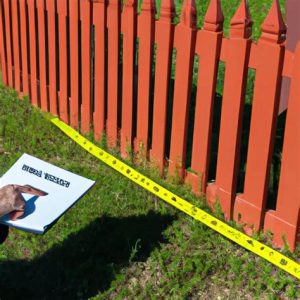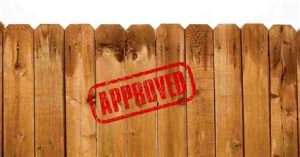Learn how to navigate local building codes and permit requirements for fences, from research to application submission and approval waiting process.When it comes to enhancing your property’s privacy and security, installing a fence is a significant step forward. However, before you dive into the actual installation process, it’s essential to navigate the often-overlooked maze of permits and local regulations. Understanding local building codes can save you time and money in the long run, ensuring your project adheres to legal standards. In this blog post, we’ll guide you through the critical steps of researching permit requirements, contacting your local zoning department, preparing necessary documentation, and submitting your permit application. By taking these preliminary steps, you’ll not only ensure compliance but also pave the way for a successful and stress-free fence installation. Let’s dive in!
Understanding local building codes
When planning a fence installation, it’s essential to understand the local building codes that govern your area. These codes are specific to each municipality and can vary widely in terms of regulations, height restrictions, and materials allowed. Before starting your project, take the time to thoroughly research these codes to ensure compliance and avoid potential fines or having to remove your newly installed fence.
Generally, building codes dictate not only where your fence can be placed (usually within your property line) but also its specifications. For instance, some locations may require a certain distance between the fence and any structures, while others have strict guidelines on the height and type of materials (like wood, vinyl, or chain-link) you can use. Understanding these aspects ahead of time can save you considerable hassle during the installation process.
An excellent starting point for understanding local building codes is your town or city’s official website. Many municipalities provide an easily accessible online database or downloadable documents that outline the relevant building codes for construction projects, including fences. Additionally, engaging with local contractors or fencing companies can offer insight and guidance based on their experience with code compliance in your area.
Researching permit requirements for fences
Before embarking on your fence installation project, it is crucial to research permit requirements in your area. Many local jurisdictions have specific rules regarding fence construction, and failing to adhere to them can lead to legal complications or costly fines.
Start by checking with your local government or municipality’s website, as they typically provide detailed information on fence permitting requirements. You may need to look for sections dedicated to building permits or zoning laws. This can save you time and ensure you have all the necessary information before proceeding.
In many cases, the height, material, and location of the fence will all influence the type of permit needed. Some areas may allow fences up to a certain height without a permit, while others may require more extensive documentation for fences over a specific height. Additionally, it’s essential to verify whether your fence lies within easement areas or property lines, as this also affects your permit application.
| Factors to Consider | Details |
|---|---|
| Fence Height | Some areas have limits on how tall fences can be without a permit. |
| Material Used | Certain materials may require special approval or additional safety measures. |
| Location | Fences near sidewalks or roadways might have specific regulations. |
Contacting local zoning department
When planning your fence installation, a crucial step is contacting your local zoning department. This department is responsible for ensuring that construction projects adhere to local laws and regulations. Depending on where you live, fences may be subject to specific restrictions such as height, style, and location. It’s essential to gather this information before proceeding with your project.
The first step in this process is to identify the appropriate zoning authority in your area. Many towns and cities have a zoning board that oversees permits and land use regulations. You can usually find contact information on your municipal website or by calling your city hall. It’s also a good idea to check if they have an office specifically dedicated to handling residential projects.
When you do reach out, be prepared with necessary details such as your property address and the type of fence you intend to install. The zoning department can provide you with a clear understanding of any restrictions or requirements that apply to your particular project.
Preparing necessary documentation
When it comes to fence installation, one of the key steps in securing the necessary permits is preparing the appropriate documentation. This process often requires careful attention to detail and a thorough understanding of what your local authorities need to approve your project.
- A site plan: This should include an accurate drawing of your property lines, existing structures, and the proposed placement of the fence.
- Property deed: A copy of your property deed can help clarify boundaries and confirm ownership.
- Construction details: This includes materials you plan to use, the height of the fence, and any special features.
In some cases, you may also need to provide evidence that you have consulted with neighbors or obtained their consent, particularly if the fence will impact shared boundaries. Ensuring that all documentation is complete and accurate will facilitate a smoother permit application process and help avoid unnecessary delays.
Submitting permit application and waiting for approval
Once you’ve completed all the preliminary steps in planning your fence installation, including understanding local building codes, researching permit requirements, and preparing the necessary documentation, the next crucial step is submitting your permit application. This part of the process is vital to ensure that your fence complies with local regulations and standards.
When you submit your application, make sure to include all required documents and details, such as your property survey, detailed fence plans, and any prior correspondence with the zoning department.
- Completed permit application form
- Site plans indicating the proposed location of the fence
- Property lines and any easements
- Specifications of the fence, including materials and height
After you’ve submitted your application, it’s time to wait for approval. This period can vary widely depending on your locality, taking anywhere from a few days to several weeks. During this time, local authorities may conduct site visits or public hearings to evaluate your proposal. It’s essential to remain patient and to check in with the zoning department if you don’t hear back within the expected timeframe.
Frequently Asked Questions
Why is it important to secure permits for fence installation?
Securing permits ensures that your fence complies with local zoning laws and building codes, which can help you avoid fines or the need to remove the fence later.
What types of permits might be required for a fence installation?
Types of permits can vary by location but typically include zoning permits, building permits, and sometimes specific permits for fence types like barbed wire or electric fences.
How can I find out what permits are needed for my fence installation?
You can find information on required permits by contacting your local government or zoning office, or by checking their website for guidelines on fence installation.
What are the potential consequences of installing a fence without a permit?
Installing a fence without a permit can lead to fines, the requirement to remove the fence, or legal issues with neighbors if the fence is deemed non-compliant.
How long does it typically take to obtain a fence installation permit?
The time it takes to obtain a permit can vary; it usually ranges from a few days to several weeks, depending on the local government’s processing time and regulations.
Are there any common misconceptions about fence installation permits?
Yes, a common misconception is that homeowners do not need permits for low fences or decorative fences; however, many areas still require permits regardless of height or type.
Can I proceed with my fence installation while waiting for a permit approval?
Generally, you should not begin installation until your permit has been approved to avoid potential fines or legal issues, but it’s best to check with your local authorities for specific guidance.





